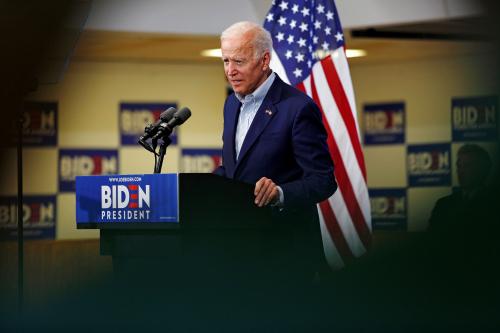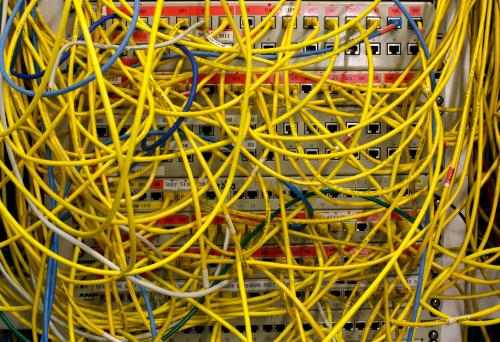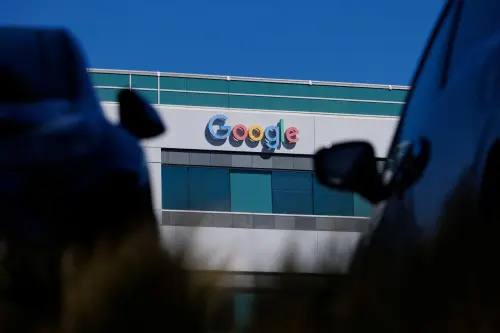The COVID-19 pandemic has graphically illustrated the importance of digital networks and service platforms. Imagine the shelter-in-place reality we would have experienced at the beginning of the 21st century, only two decades ago: a slow internet and (because of that) nothing like Zoom or Netflix.
Digital networks that deliver the internet to our homes, and the services that ride on those networks have leapt from an ancillary “nice to have” to something that is critical to economic activity and our daily lives. It is time to consider whether these companies are too important to be left to make the rules governing their behavior themselves.
New rules for a new reality
It is neither unusual, nor untoward that innovators make the rules for the new reality they create. After all, they are the ones who see the future. The last time there was a major technological revolution—the industrial revolution—it was industrial capitalists like Rockefeller, Carnegie, and Morgan who made the rules. However, it ultimately became necessary to assert the public interest in the oversight of these activities.
The connectivity and services built by information capitalists have become too important to be left any longer without public participation in determining the rules they follow.
This does not mean that we need heavy-handed regulation like in the industrial era. But it does mean that the critical nature of these digital services warrants public interest representation in decisions about their practices. We know the results of the companies making the rules. Because there was no public representation, our personal information is now a corporate commodity. Similarly, because the companies make their own rules, they are free to hoard that data in order to thwart potential competitors and new services.
The operation of the information economy is different from the operation of the industrial economy. While companies operating in both must invest in the necessary plant and equipment, the economics of how that investment performs differ with the assets used by each. Industrial assets such as coal or ore are exhausted by being use, while information assets are soft, inexhaustible, and iterative. When Ford builds a new truck, for instance, the company incurs incremental costs to procure the glass, metal, tires, and other hard assets. But when Facebook adds a new customer, it reuses the same software that enabled billions of other customers. Similarly, the production of a new truck is an end unto itself. But the addition of a new digital user by a network such as AT&T or a service such as YouTube is the beginning of the iterative production of new data, generated by the use of the product, that can be monetized in new services at virtually no marginal cost to the company.
Four Ideas for Public Participation
Because the economics, and thus the practices, of information companies are different, we must look beyond the industrial era regulatory model. Here are four ideas to incorporate public participation in establishing the rules for the critical services of the information era:
First, do not pretend these challenges can be shoehorned into industrial era regulatory structures. This is not a criticism of the existing agencies whose important work should continue, but a recognition that digital market activity is different. The current regulatory structure, for instance, is built around “who” does something rather than “what” is being done. In the Industrial Age, the networks that carried the product were different from the product itself and separate regulators made sense. In the digital era where the “what” is the manipulation of zeroes and ones, our current regulatory structure has been outpaced and needs to catch up.
Second, digital companies should have a seat at the table in the development of the rules rather than having them force-fed. The National Electrical Code, for instance, is an industry-developed standard that is adopted into law. A “Digital Code of Practice” will similarly allow policies to keep up with technology rather than being tied to old rules. There should be a new federal agency that convenes, oversees, and approves a public-private process that establishes an agency-enforceable Digital Code.
Third, this new Digital Code is not a substitute for antitrust enforcement. The Digital Code is about the behavior of the companies in the services they offer to the public. If a company behaves in an anticompetitive manner, including mergers, that should be the jurisdiction of antitrust enforcers and the Code should not include antitrust exemption.
Fourth, the regulatory oversight needs to be principles-based and agile. Industrial production was a rules-based linear process where each person on the shop floor followed rules for a specific task. Industrial regulation followed the same rigid pattern. In contrast, modern digital products are never finished (think how your smartphone is always updating its software). Digital products are constantly adapting to the changes in their environment. This agile development needs to find its equivalent in agile regulation. Heavy-handed industrial “do this or else” needs to give way to “this is how technology is changing and business practices must evolve as well.”
COVID-19 demonstrated how our networks and the services they deliver are a critical part of our lives and our economy. Something that critical is too important not to have a public interest obligation. At the same time, such public interest oversight must operate in a manner that reflects the realities of the information era and not be stuck in industrial era structures and concepts.
The Brookings Institution is committed to quality, independence, and impact.
We are supported by a diverse array of funders. In line with our values and policies, each Brookings publication represents the sole views of its author(s).







Commentary
COVID-19 has taught us the internet is critical and needs public interest oversight
April 29, 2020